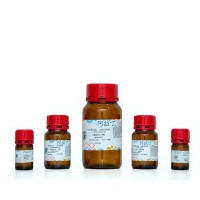The NF-B Transcription Factor Pathway as a Therapeutic Target in Cancer: Methods for Detection of NF-B Activity
互联网
803
NF-κB transcription factors marshal innate and adaptive immunity and inflammation. NF-κB also counters programmed cell death (PCD) induced by the proinflammatory cytokine tumor necrosis factor (TNF)α, and this activity of NF-κB is crucial for organismal physiology, chronic inflammation, and tumorigenesis. Indeed, whereas NF-κB contributes to many aspects of oncogenesis, it is now clear that its suppressive action on PCD is central to this process. Notably, recent studies indicate that NF-κB represents a crucial link in the well-established association between inflammation and carcinogenesis. In this link, NF-κB promotes synthesis of inflammatory mediators (e.g. TNFα) that stimulate growth of cancer cells, and upregulates genes that protect these cells against PCD induced by inflammatory signals. Elevated NF-κB activity also hampers tumor-cell killing inflicted by radiation and chemotherapeutic drugs, and in so doing, promotes resistance to anticancer therapy. Accordingly, NF-κB-targeting drugs are increasingly being used for treatment of human malignancies. Owing to the ubiquitous nature of the NF-κB pathway, however, these drugs have serious side effects, which limit their clinical use. Thus, a preferable approach would be to block, rather than NF-κB itself, its critical downstream targets that mediate discrete functions in cancer, such as prosurvival functions. Recent discoveries unraveling tissue specificity in the NF-κB-inducible mechanism(s) for control of PCD and identifying putative effectors of this control clearly validate this therapeutic approach. Given the emerging role of TNFκ-induced signals of NF-κB activation in cancer and the potential of these signals for yielding new anticancer therapies, we focus herein on the methods most commonly used for analysis of the molecular steps leading from the triggering of TNF-Receptor (TNF-R)1 – the primary receptor of TNFα – to the induction of NF-κB. Specifically, we review the methods used for analysis of TNF-R1 trafficking, assembly of so-called TNF-R1 complex I, formation and activation of the IκB kinase (IKK) complex, phosphorylation and proteolysis of inhibitory IκB proteins, post-translational modifications and nuclear translocation of NF-κB dimers, induction of NF-κB transcriptional activity and binding to specific promoters, and upregulation of NF-κB target genes. The analysis of these events in cancerous cells may not only provide a better understanding of the basis for the role of NF-κB in carcinogenesis, but also potential new targets for selective anticancer therapy.








